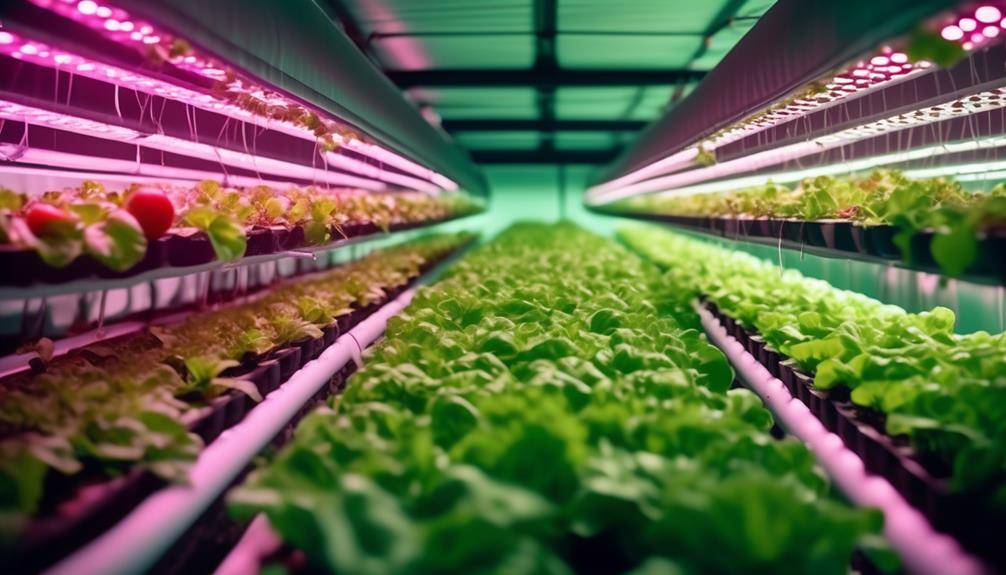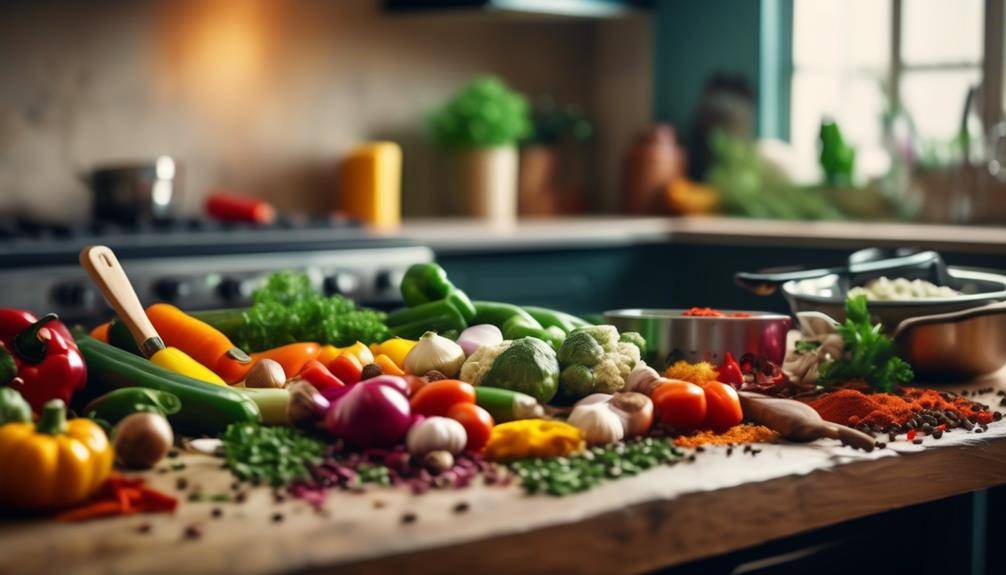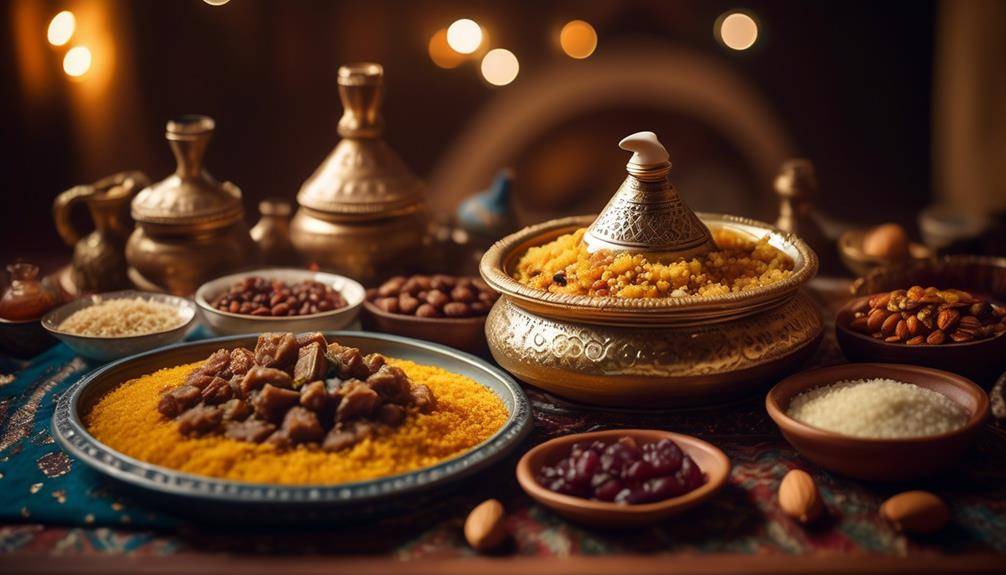Great Reasons For Hydroponics As A Solution For Food Shortage

Hydroponics As A Solution For Food Shortage; Did you know that hydroponics is an innovative and efficient solution to address food shortages? With the global population steadily increasing and arable land becoming scarce, traditional agriculture methods may no longer be sufficient to meet the growing demand for food. However, hydroponics offers a promising alternative that allows for the cultivation of crops in a controlled environment without the need for soil.
This method utilizes water and nutrient solutions to deliver essential elements directly to the plants, resulting in faster growth, higher yields, and reduced resource consumption. But how exactly does hydroponics work, and what are its benefits? Let’s explore further to uncover the potential of hydroponics in solving the pressing issue of food shortage.
The Basics of Hydroponics
Hydroponics, a soil-less method of growing plants, offers a scientifically advanced and efficient solution for producing food in limited spaces. In this section, we will delve into the basics of hydroponics, including hydroponic systems and the concept of DIY hydroponics.
Hydroponic systems are designed to provide plants with the essential nutrients they need to grow, without the use of soil. Instead, plants are grown in a nutrient-rich solution that is delivered directly to their roots. There are several types of hydroponic systems, each with its own advantages and disadvantages. Some common types include the deep water culture system, the nutrient film technique system, and the ebb and flow system.
For those interested in trying hydroponics on a smaller scale, DIY hydroponics is a great option. It allows individuals to build their own hydroponic systems using readily available materials. The key components of a DIY hydroponic system include a growing container, a nutrient reservoir, a pump to circulate the nutrient solution, and a way to provide light to the plants. With a little bit of research and experimentation, anyone can set up their own DIY hydroponic system and start growing their own fresh produce.
Hydroponics is a highly efficient method of growing plants, as it eliminates the need for soil and reduces water usage. Additionally, the controlled environment of hydroponic systems allows for better control over plant nutrition and growth, resulting in higher yields and faster growth rates. Whether you choose to invest in a pre-made hydroponic system or try your hand at DIY hydroponics, this innovative technique has the potential to revolutionize food production in limited spaces.
Benefits of Hydroponic Farming
One of the key advantages of hydroponic farming is its ability to maximize crop yields in a controlled environment. This method of farming offers several benefits that contribute to maximizing efficiency and promoting sustainable agriculture. Here are three important benefits of hydroponic farming:
- Water Efficiency: Hydroponic systems use up to 90% less water compared to traditional soil-based farming. By delivering water directly to the plant roots in a controlled manner, hydroponics eliminates the need for excessive irrigation. The water used in hydroponics can be recirculated, reducing water waste and ensuring optimal water utilization.
- Space Optimization: Hydroponics allows for vertical farming, making it possible to grow crops in stacked layers. This vertical approach maximizes the use of limited space, allowing for greater crop production per square foot. With hydroponics, farmers can grow more crops in a smaller area, making it an ideal solution for urban areas or regions with limited arable land.
- Enhanced Nutrient Delivery: In hydroponic systems, nutrients are delivered directly to the plant roots in a highly controlled manner. This targeted approach ensures that plants receive the exact amount of nutrients they need for optimal growth and development. By providing plants with an ideal nutrient balance, hydroponics eliminates nutrient deficiencies and reduces the need for pesticides or herbicides, resulting in healthier crops and higher yields.
Hydroponic farming offers a promising solution for food shortage by maximizing crop yields while promoting sustainable agriculture. With its water efficiency, space optimization, and enhanced nutrient delivery, hydroponics presents an innovative and efficient approach to food production. By harnessing the power of this technology, we can work towards a future where food scarcity is no longer a concern.
Maximizing Crop Yields With Hydroponics
To maximize crop yields with hydroponics, you can start by providing a nutrient-rich water supply. Hydroponic systems allow for precise control over the nutrient levels, ensuring that plants receive the optimal amount of nutrients they need to grow and thrive. Additionally, hydroponics allows for controlled environmental conditions, such as temperature, humidity, and light, which can further enhance crop growth and increase yields. Lastly, hydroponic systems are known for their efficient space utilization, as they can be designed vertically or in compact setups, allowing for higher crop densities and maximizing the use of available space.
Nutrient-Rich Water Supply
Maximizing crop yields with hydroponics involves supplying nutrient-rich water to nourish plants and promote optimal growth. To achieve this, hydroponic systems are designed to provide plants with the necessary nutrients in a controlled environment. Here are three key aspects of nutrient-rich water supply in hydroponics:
- Nutrient Solution: Hydroponic systems use a nutrient solution that contains all the essential elements required for plant growth. This solution is carefully formulated to ensure the right balance of macronutrients (such as nitrogen, phosphorus, and potassium) and micronutrients (such as iron, zinc, and manganese).
- pH and Electrical Conductivity: Maintaining the correct pH and electrical conductivity levels of the nutrient solution is crucial for nutrient absorption by plants. Regular monitoring and adjustments are necessary to ensure optimal nutrient uptake.
- Water Quality: The quality of the water used in hydroponics is vital to prevent the buildup of harmful elements or pathogens. Filtration, sterilization, and testing procedures are employed to ensure the water is free from contaminants and suitable for plant growth.
Controlled Environmental Conditions
Controlled environmental conditions play a crucial role in maximizing crop yields with hydroponics. By providing the optimal conditions for plant growth, hydroponic systems can significantly increase the efficiency and productivity of food production. One of the key benefits of a controlled environment is the ability to eliminate external factors that can negatively impact plant growth, such as pests, diseases, and extreme weather conditions. This allows growers to maintain a consistent and stable environment, ensuring the health and vitality of the plants.
Additionally, a controlled environment enables growers to fine-tune factors such as temperature, humidity, and light intensity, providing plants with the ideal conditions for growth. By adopting these sustainable farming practices and harnessing the benefits of a controlled environment, hydroponics can help address the food shortage crisis and promote a more efficient and resilient agricultural system.
Efficient Space Utilization
Efficient space utilization is a critical factor in maximizing crop yields with hydroponics. Vertical farming, a form of urban agriculture, offers innovative solutions for optimizing space utilization and increasing productivity. Here are three key strategies for efficient space utilization in hydroponics:
- Vertical stacking: By growing plants in multiple layers, vertical farming allows for the cultivation of a greater number of plants within a limited space. This technique maximizes the use of vertical height, making it possible to grow more crops in a smaller footprint.
- Smart layout design: Careful planning and design of the hydroponic system can ensure efficient use of space. Systems can be tailored to fit specific space constraints, allowing for optimal placement of growing modules and equipment.
- Crop rotation and staggered planting: By implementing crop rotation and staggered planting schedules, hydroponic farmers can continuously utilize the available space. This practice ensures that crops are constantly growing and harvesting, maximizing yields throughout the year.
Efficient space utilization in hydroponics is essential for meeting the increasing demand for food in urban areas. Vertical farming and other innovative techniques enable farmers to make the most of limited space, contributing to a sustainable and resilient food system.
Reducing Land Requirements With Hydroponics
Hydroponics offers a viable solution for reducing the land requirements in agriculture, making it an efficient and sustainable method of food production. By utilizing vertical farming techniques, hydroponics maximizes the use of available space, allowing for higher crop yields and reducing the need for large areas of land.
One of the main advantages of hydroponics is its ability to reduce costs and increase profitability. Traditional farming methods often require large amounts of land for planting crops, which can be expensive to purchase and maintain. Additionally, the use of pesticides and fertilizers in conventional farming can further increase costs. In contrast, hydroponics eliminates the need for soil and significantly reduces the use of harmful chemicals, resulting in lower production costs and higher profit margins.
Another way hydroponics reduces land requirements is through its efficient use of water. Traditional farming methods typically require large amounts of water for irrigation, leading to water wastage and increased land requirements for water sources. Hydroponics, on the other hand, recirculates water, using up to 90% less water than conventional farming. This not only conserves water resources but also reduces the need for land to accommodate water sources, making hydroponics a more sustainable and land-efficient option.
Furthermore, hydroponic systems can be set up in a variety of locations, including urban areas and indoor environments. This flexibility allows for the cultivation of crops in areas where land is limited or expensive. By utilizing vertical farming methods, hydroponics maximizes the use of available space. This means that even in densely populated cities, food can be grown in vertical towers or containers, reducing the need for large plots of land.
Efficient Water Usage in Hydroponics
By optimizing water usage, hydroponic systems can overcome the limitations of traditional farming methods and contribute to more sustainable agricultural practices. In hydroponics, water conservation is a key focus, as it allows for efficient use of limited water resources while ensuring optimal plant growth. Here are three important strategies used in hydroponics to achieve efficient water usage:
- Recirculating Systems: Hydroponic systems often utilize recirculating systems, where water is continuously circulated through the root zone of plants. This allows for the reuse of water, reducing the overall water consumption. Nutrient-rich water is delivered to the plants’ roots, and excess water is collected, treated, and recirculated back into the system. By recycling water, hydroponics minimizes the amount of water needed to grow plants compared to traditional farming methods.
- Precision Irrigation: Another water-saving technique in hydroponics is precision irrigation. This method involves delivering water directly to the roots of plants in precise amounts and at specific times. By providing plants with only the necessary amount of water, hydroponic systems prevent water wastage through runoff or evaporation. Precision irrigation systems also monitor and adjust water levels based on plant needs, ensuring efficient water usage and avoiding water stress.
- Water Conservation Technologies: Hydroponics incorporates various water conservation technologies to further optimize water usage. These technologies include advanced sensors and automation systems that monitor and control water levels, preventing overwatering and minimizing water loss. Additionally, techniques such as drip irrigation, fogging systems, and aeroponics help deliver water more efficiently to plant roots, reducing water waste and maximizing plant uptake.
Efficient water usage is a crucial aspect of sustainable agriculture, and hydroponics demonstrates its effectiveness in conserving water resources. By implementing recirculating systems, precision irrigation, and water conservation technologies, hydroponics not only addresses the global challenge of water scarcity but also ensures the long-term viability of agricultural practices.
Year-Round Production With Hydroponics
Can hydroponics provide a solution for year-round food production? The answer is a resounding yes. With the advancements in hydroponic technology, year-round sustainability in food production has become a reality. One method that enables this is vertical farming, which maximizes the use of space and resources.
Vertical farming involves growing plants in vertically stacked layers, using artificial lighting and controlled environments. By utilizing this method, farmers can optimize the use of available space, making it possible to grow crops throughout the year. Vertical farms can be set up in urban areas, reducing the need for transportation and ensuring a steady supply of fresh produce.
One advantage of year-round production with hydroponics is the ability to control environmental factors. By providing the optimal conditions for plant growth, such as temperature, humidity, and nutrient levels, farmers can ensure consistent and high-quality yields. This level of control also minimizes the risk of crop failure due to adverse weather conditions, pests, or diseases.
Furthermore, hydroponic systems can be designed to recycle water and nutrients, reducing water consumption by up to 90% compared to traditional soil-based agriculture. This not only contributes to the sustainability of year-round production but also helps address the global water scarcity issue.
Nutrient Management in Hydroponic Systems
To effectively manage nutrients in hydroponic systems, you need to pay attention to three key points. First, the composition of the nutrient solution, which should include all the essential elements required for plant growth. Second, the regulation of pH levels, as plants have specific pH requirements for optimal nutrient absorption. And finally, the efficiency of nutrient absorption, which can be improved through techniques like foliar feeding and adjusting nutrient concentrations. By focusing on these points, you can ensure that your hydroponic plants receive the nutrients they need to thrive.
Nutrient Solution Composition
The composition of the nutrient solution plays a crucial role in the effective management of nutrients in hydroponic systems. To ensure the success of your hydroponic setup and promote sustainable agriculture, consider the following key factors when determining the nutrient solution composition:
- Macronutrients: These are essential elements required in relatively large amounts by plants. Common macronutrients include nitrogen, phosphorus, and potassium. Balancing the levels of these nutrients is crucial for healthy plant growth and development.
- Micronutrients: These are trace elements that plants need in smaller quantities. Iron, manganese, and zinc are examples of micronutrients that play vital roles in various physiological processes. Including these elements in the nutrient solution ensures optimal plant health.
- pH Level: Maintaining the appropriate pH level is essential for nutrient availability and uptake. Most plants prefer a slightly acidic pH range of 5.5 to 6.5. Regular monitoring and adjustment of the pH level will help prevent nutrient deficiencies or toxicities.
Ph Level Regulation
Maintaining the appropriate pH level in the nutrient solution is a critical aspect of effective nutrient management in hydroponic systems, ensuring optimal nutrient availability and uptake for healthy plant growth and development. pH level monitoring is essential to maintain a balanced nutrient solution. Monitoring the pH level allows growers to detect and correct imbalances that can hinder nutrient absorption and compromise plant health.
The optimal pH range for most hydroponic crops falls between 5.5 and 6.5. Above or below this range, certain nutrients become less available, leading to deficiencies or toxicities. Regularly testing the pH level of the nutrient solution using a pH meter or test kit is crucial. To adjust the pH, acid or alkali solutions can be added to the nutrient solution, ensuring a balanced pH level for optimum nutrient uptake and plant growth.
Nutrient Absorption Efficiency
Improving nutrient absorption efficiency is a crucial aspect of nutrient management in hydroponic systems, as it directly affects plant growth and productivity. Maximizing productivity and optimizing nutrient uptake are key goals in hydroponics, and achieving high nutrient absorption efficiency plays a significant role in achieving these goals. Here are three important factors to consider in optimizing nutrient absorption efficiency:
- pH level: Maintaining the appropriate pH level in the hydroponic solution is essential for nutrient absorption. Different nutrients are absorbed best at specific pH ranges, so monitoring and adjusting the pH accordingly is crucial for maximizing nutrient uptake.
- Nutrient balance: Providing a balanced nutrient solution that contains all the essential macro and micronutrients in the right proportions is vital for optimal absorption. Each nutrient has a specific role in plant growth and development, and an imbalance can lead to nutrient deficiencies or toxicities, hampering absorption efficiency.
- Root zone conditions: Creating an ideal root environment is key to maximizing nutrient absorption efficiency. Adequate oxygen levels, proper temperature, and sufficient root zone moisture are necessary to support healthy root growth and nutrient uptake.
Challenges and Solutions in Hydroponic Farming
To effectively address the challenges faced in hydroponic farming, it is crucial to implement innovative strategies and adapt to the evolving needs of this sustainable agricultural technique. Hydroponic systems have gained popularity due to their ability to grow plants without soil, using nutrient-rich water solutions instead. However, like any farming method, hydroponics also comes with its own set of challenges.
One of the primary challenges in hydroponic systems is maintaining proper nutrient balance. Since plants rely solely on the nutrient solution for their growth, it is essential to ensure that the right nutrients are available in the correct quantities. Imbalances can lead to nutrient deficiencies or toxicities, stunting plant growth and affecting crop yield. To overcome this challenge, innovative hydroponic techniques, such as nutrient film technique (NFT) or deep water culture (DWC), have been developed. These techniques allow for better nutrient distribution and uptake, optimizing plant growth.
Another challenge is preventing the spread of diseases and pests in hydroponic systems. Without the natural barriers provided by soil, plants are more susceptible to infections and attacks. Implementing strict hygiene protocols, such as sterilizing equipment and monitoring plant health regularly, is crucial in preventing the spread of diseases. Additionally, introducing beneficial insects or using biological controls can help manage pests in a sustainable manner.
Water management is also a significant challenge in hydroponic farming. Since water is the primary medium in which plants grow, it needs to be carefully monitored and conserved. Techniques such as recirculating systems or employing water-saving technologies like drip irrigation can help minimize water usage and increase efficiency.
The Future of Hydroponics in Food Production
The future of hydroponics in food production holds immense potential for increasing crop yields and ensuring sustainable agriculture practices. As technology continues to advance, hydroponic systems are becoming more efficient and cost-effective, making them an attractive option for farmers and researchers alike. Here are three future advancements and their economic implications:
- Vertical farming: Vertical farming is a concept that involves growing crops in vertically stacked layers, using artificial lighting and controlled environments. This method allows for maximum space utilization and high crop yields, making it ideal for urban areas where land is limited. The economic implications of vertical farming are significant, as it can reduce transportation costs, decrease the need for pesticides, and provide a reliable source of fresh produce year-round.
- Automation and robotics: The integration of automation and robotics in hydroponic systems can revolutionize food production. Robots can perform tasks such as seeding, transplanting, harvesting, and monitoring plant health, reducing the need for manual labor. This not only increases efficiency but also lowers labor costs. Additionally, automation can optimize nutrient delivery and environmental conditions, leading to higher crop yields and better resource management.
- Nutrient optimization and waste reduction: Future advancements in hydroponics will focus on developing precise nutrient delivery systems that ensure optimal plant growth. By fine-tuning nutrient solutions, farmers can maximize crop yields and reduce waste. This not only has environmental benefits but also has economic implications, as it minimizes the need for excessive fertilizer use and reduces production costs.
Hydroponics As A Solution For Food Shortage; Frequently Asked Questions
How Does Hydroponics Compare to Traditional Soil Farming Methods in Terms of Crop Yield?
In terms of crop yield, hydroponics outperforms traditional soil farming methods. It optimizes resource usage by providing precise nutrient delivery and eliminating soil-related challenges. Additionally, hydroponics ensures consistent crop quality, free from soil-borne diseases and contaminants.
What Are the Potential Drawbacks or Limitations of Using Hydroponics for Food Production?
When considering the potential drawbacks or limitations of using hydroponics for food production, challenges in implementing hydroponic systems arise. These include high initial costs, technical expertise required, and the need for precise nutrient and water management.
Are There Any Specific Crops That Are Particularly Well-Suited for Hydroponic Farming?
Specific hydroponic crops, such as leafy greens (lettuce, spinach) and herbs (basil, cilantro), are well-suited for hydroponic farming. The advantages of hydroponics for urban agriculture include higher yields, water conservation, and the ability to grow in limited space.
How Does the Cost of Setting up and Maintaining a Hydroponic Farm Compare to Traditional Farming Methods?
Setting up and maintaining a hydroponic farm is costlier compared to traditional farming methods due to the need for specialized equipment and nutrient solutions. However, the long-term maintenance costs can be lower as hydroponic systems require less water and pesticides.
What Are the Main Environmental Benefits of Hydroponics Compared to Conventional Agriculture?
The benefits of hydroponics are numerous when compared to conventional agriculture. Hydroponics offers significant environmental advantages, such as reduced water usage, minimal pesticide use, and the ability to grow crops in areas with limited arable land.
Conclusion
In conclusion, hydroponics offers a promising solution to address food shortage challenges. With its efficient use of water and space, hydroponic farming maximizes crop yields and allows for year-round production. The carefully managed nutrient systems ensure optimal plant growth. Despite some challenges, such as initial setup costs and technical expertise required, the future of hydroponics in food production looks promising. As the world’s population continues to grow, hydroponics presents a sustainable and scalable approach to meet the increasing demand for food.








